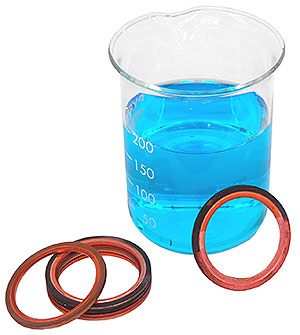Surface Preparation, Chemical Etching, Electrochemical and Pickling Processes
 As an industrially based laboratory LPD Lab Services have a significant amount of experience in chemical treatments such as chemical etching, chemical cleaning, pickling and electrochemical processes like anodising and plating. These processes are employed for a whole variety of reasons and so their performance and stability in process and as a resultant surface treatment can be critical for function, operation life and even in terms of downstream process interactions:
As an industrially based laboratory LPD Lab Services have a significant amount of experience in chemical treatments such as chemical etching, chemical cleaning, pickling and electrochemical processes like anodising and plating. These processes are employed for a whole variety of reasons and so their performance and stability in process and as a resultant surface treatment can be critical for function, operation life and even in terms of downstream process interactions:
Example chemical treatments include:-
- Pickling to remove oxides, corrosion and contaminants prior to priming and painting on steels and aluminium alloys.
- Deliberate oxide layer growth by anodising of aluminium to provide better corrosion resistance.
- Passivation processes.
- Anodising of aluminium alloys to provide a consistent good surface to key and bond to in painting of components such as aerospace and automotive applications or for applying adhesive joints and sealants.
- Electrochemical or electroless plating processes for corrosion protection, decorative appearance, optical attributes, etc.
- Surface treatments of plastics such as use of silane coupling agents, adhesion promoters and corona discharge.
The experience of LPD Lab Services is frequently used to solve customer’s problems in chemical etching, surface preparation and electrochemical process. A combination of surface analytical techniques such as XPS, SIMS and AES and chemical analytical techniques such as FTIR, AAS and XRF are used to investigate surface quality. Physical microscopic examination is carried out by optical microscopy and electron microscopy (SEM/EDX).
Many of these production chemical treatments are closely associated with cleaning, degreasing and rinsing processes so interactions are often at the root of product problems. Analytical work coupled with a detailed process knowledge means the laboratory can offer practical containment actions and solutions to faults. This can involve changes to the chemistry, process condition modifications and even devising process monitoring (Quality Control) methods:-
- Rapid turnaround analysis of routine samples.
- Development of tests and technology transfer for the customer to carry out tests in house.
- Recommendation of simple in house testing procedures with alarm limits for process control (SPC).
Applications Examples
- Investigation of peeling interfacial embossing layers.
- Improvement of label adhesion to glass bottles.
- Failing metal dip and electroless coatings on merchandise.
- Determination of reasons for delaminating multilayer printing on security products.
- Checks for use of size at fibre to matrix interface in CFRP by SEM.

